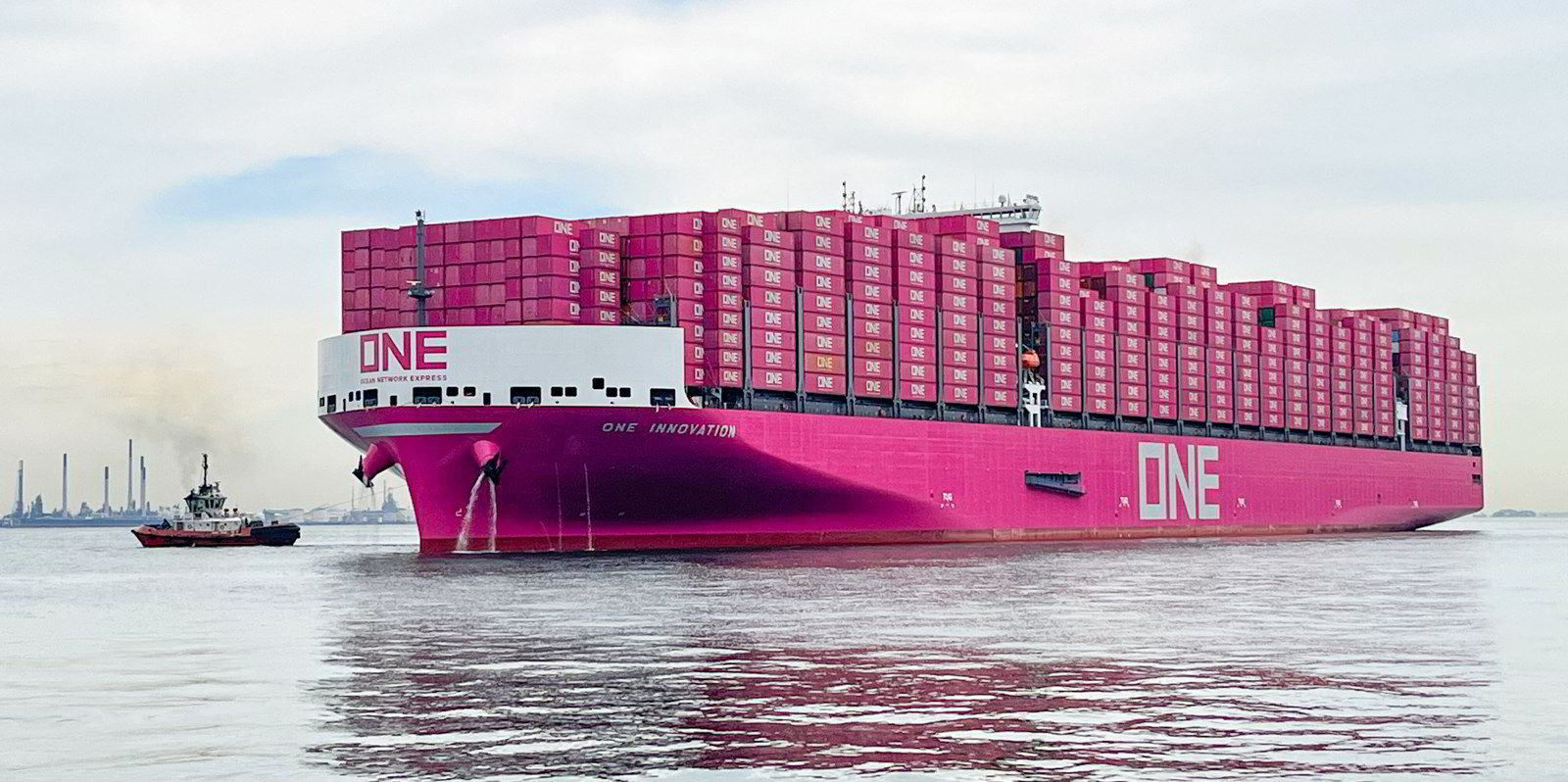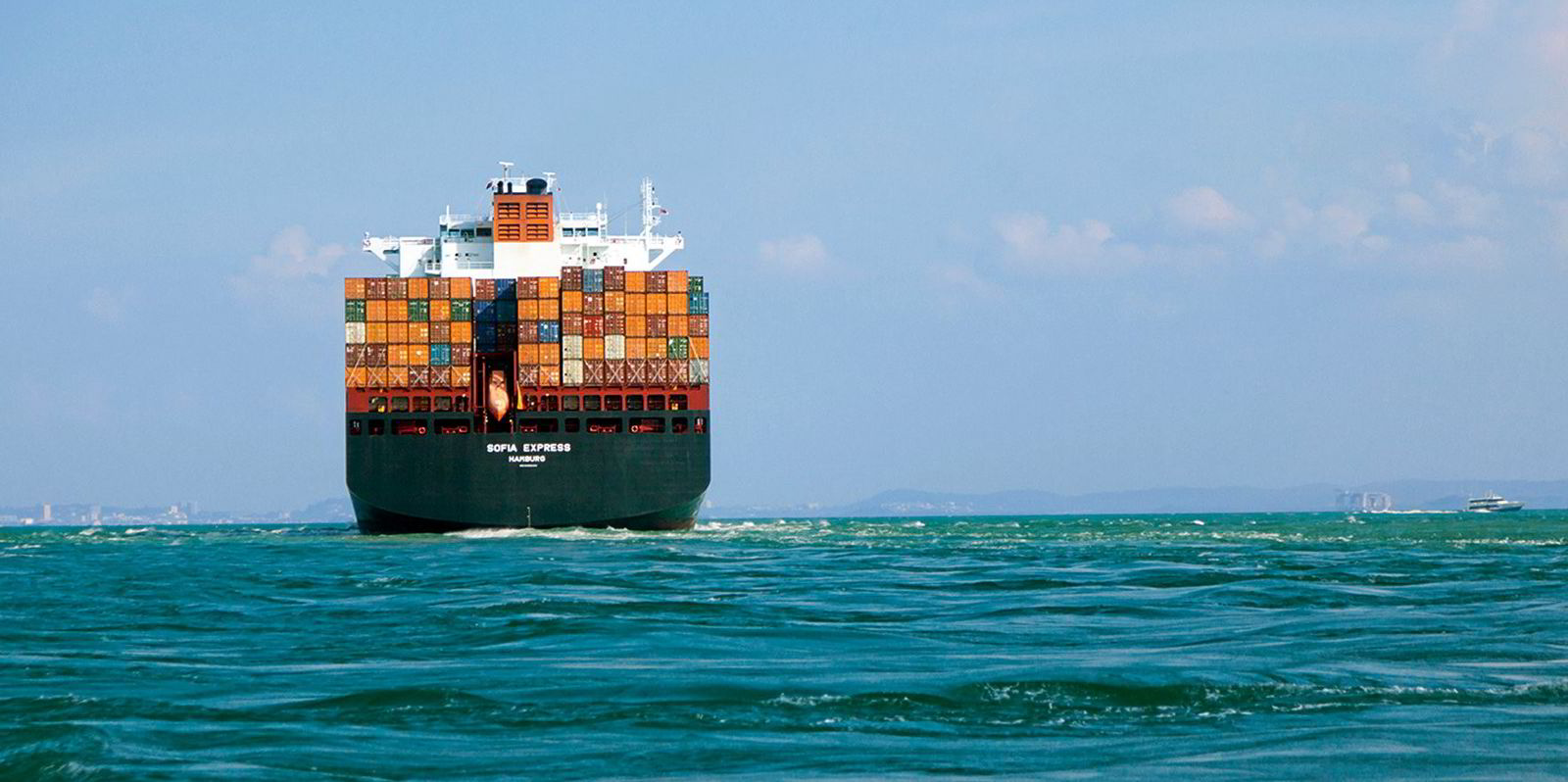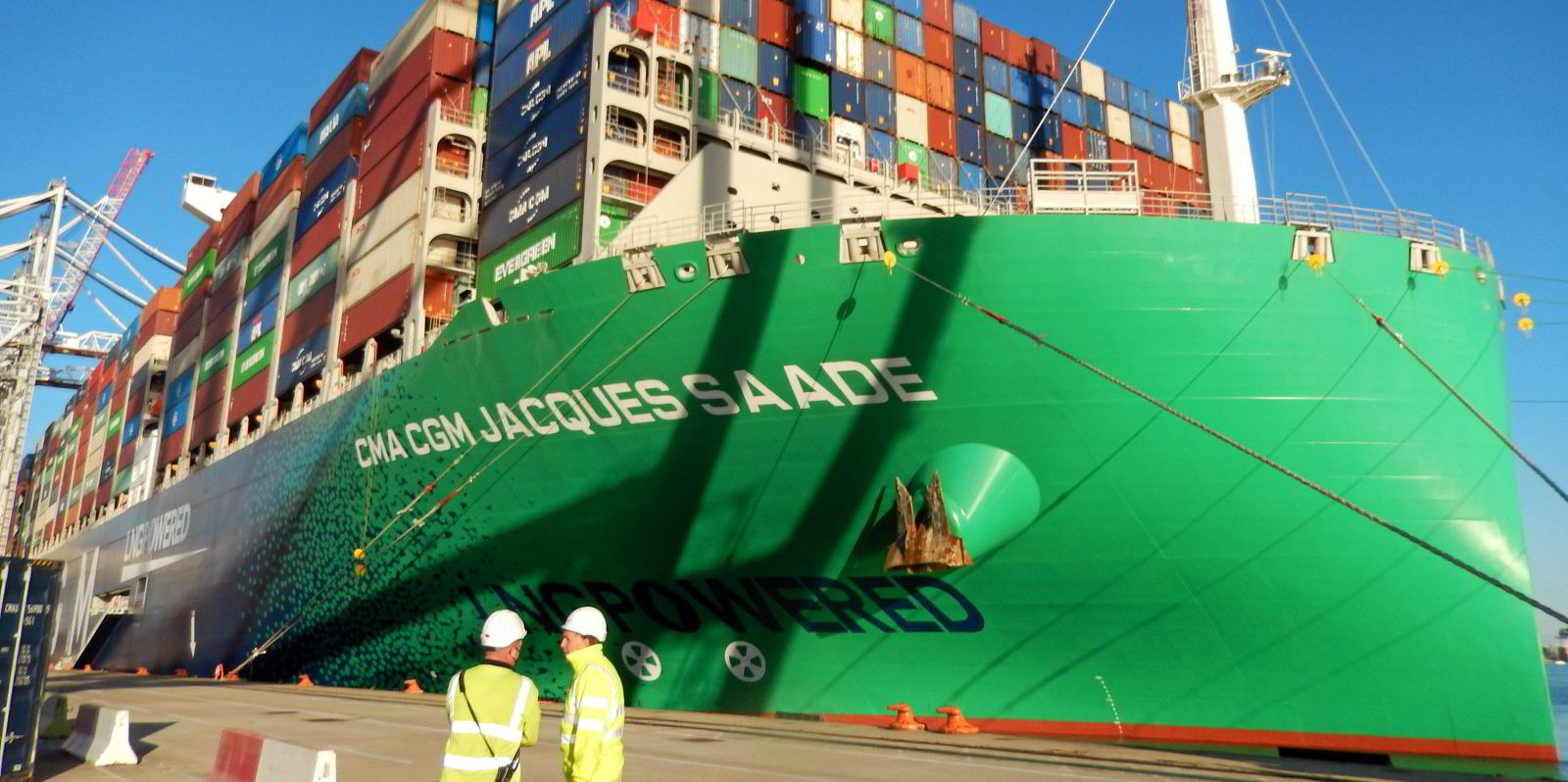Container freight rates have slightly recovered as another major shipping alliance unveiled plans to cut capacity.
But the freight rate rally could be short-lived, with some forecasts that the whole liner industry could soon be lossmaking in the coming quarters.
Freight rates have risen for a second week as the four carrier members of THE Alliance unveiled plans to suspend two key east-west services to stem the decline.
THE Alliance members Hapag-Lloyd, Ocean Network Express, Yang Ming Marine Transport and HMM are to “temporarily” suspend their EC4 and FE5 services operating from Asia to the US east coast and North Europe.
The two services will be suspended “in consideration of the present market”, THE Alliance said.
That refers to freight rates falling to lossmaking levels on trades where 20 vessels up to 14,000 teu operate.
The move sees THE Alliance join other liner players that have already cut capacity to stem the decline in rates, including the 2M alliance partners MSC Mediterranean Shipping Company and AP Moller-Maersk.
The 2M partners will continue to skip one of their five weekly sailings on the Asia-North Europe trade from the end of October until the first half of December, said Alphaliner.
The extra blanked sailings are meant to address the continued erosion of freight rates, fuelled by a growing mismatch between insufficient demand and rising capacities.
Concurrently, the members of the Ocean Alliance will next month cancel six sailings on the Asia to North Europe trade as cargo demand ex-China remains insufficient relative to the current capacities on the water, said Alphaliner.
The move by liner operators comes as freight rates have fallen to “unsustainable “ levels, Xeneta chief executive Patrik Berglund said.
“So the question is when they will go up, not if they will go up,” he noted.
He said that shipping liner companies are effectively subsidising businesses to transport their goods worldwide.
“The big shipping liner companies won’t allow this to continue and will jack up prices — it could be in 2024, or it could be later — but it’s inevitable, and the carriers will want it sooner rather than later.”
Losses ahead?
Initial indications are that lines have stopped the rot, with freight rates rising from their mid-October low.
The Freightos Baltic Index rose to 1,085 on 23 October from a low of 1,018 a week earlier.
However, rates are still close to 29% down from the end of August.
Unless rate rises planned for November are successful, it might not prevent the industry from reporting losses in the coming months.
Current spot rates are at their 2019 levels at a time when operating costs are at least 30% up compared to the pre-pandemic period, according to Maritime Strategies International.
So the prospect is for significantly worsened financial results for the third quarter of this year and in the future, the UK-based analyst said in its monthly report Horizon.

There is “a notable possibility that the liner industry as a whole will start making losses from Q4 23 or Q1 24 onwards,” the analyst added.
Demand is seasonally down over the rest of 2023 while new vessels continue to be added to the fleet.
MSI expects around 2.6m teu to hit the water between the fourth quarter of this year and the end of the second quarter of next year.
That is likely to lead to further declines in freight rates and charter rates for at least the coming three quarters.
Cascading threat
Strict capacity discipline and massive scrapping will be paramount if carriers want to prevent further freight erosion in the coming three quarters, MSI concluded.
Carriers may also have to wrestle with capacity versus demand imbalance via cascading larger ships onto smaller trades, said Xeneta.
“This could be seen as a desperate measure to sacrifice profitability on a smaller trade in order to protect their major trades,” it noted.
MSC moved the 15,934-teu MSC Victoria (built 2023) to an Asia-to-Africa service, making it the largest ship in this trade.
In 2019, the average ship deployed between the Far East and Africa was 4,000 teu, whereas the average ship leaving the Far East on MSC’s Africa Express service in October and November this year has a capacity of 12,850 teu, said Xeneta.






